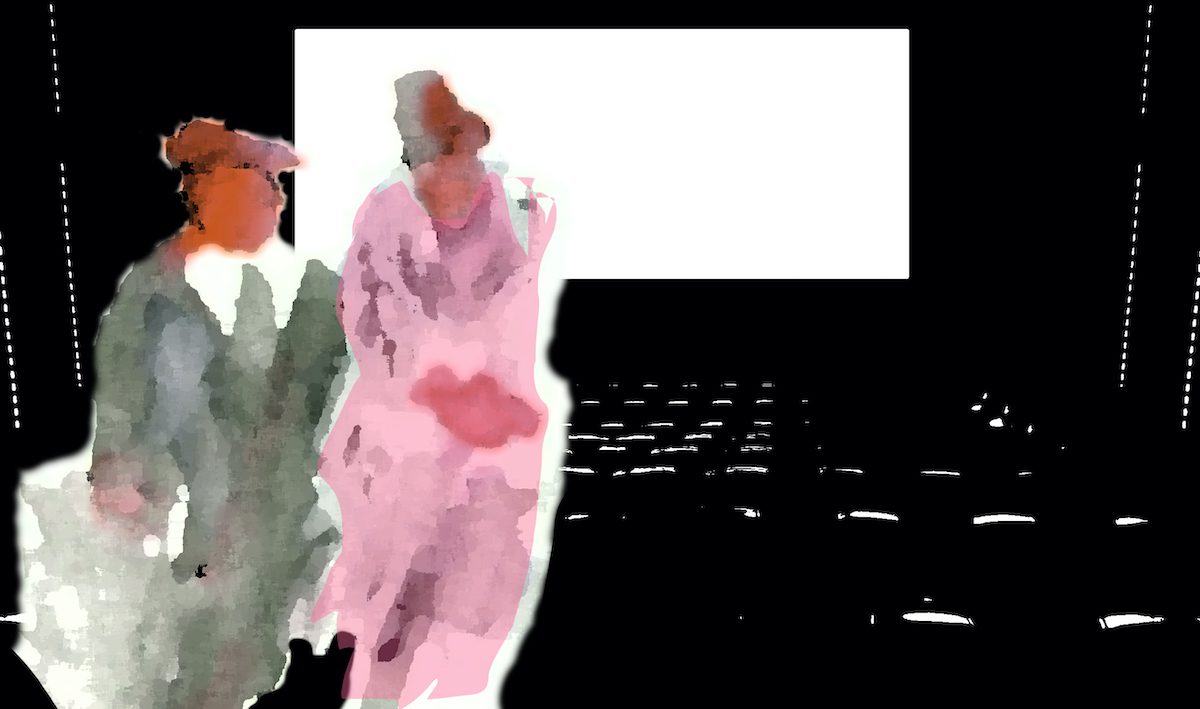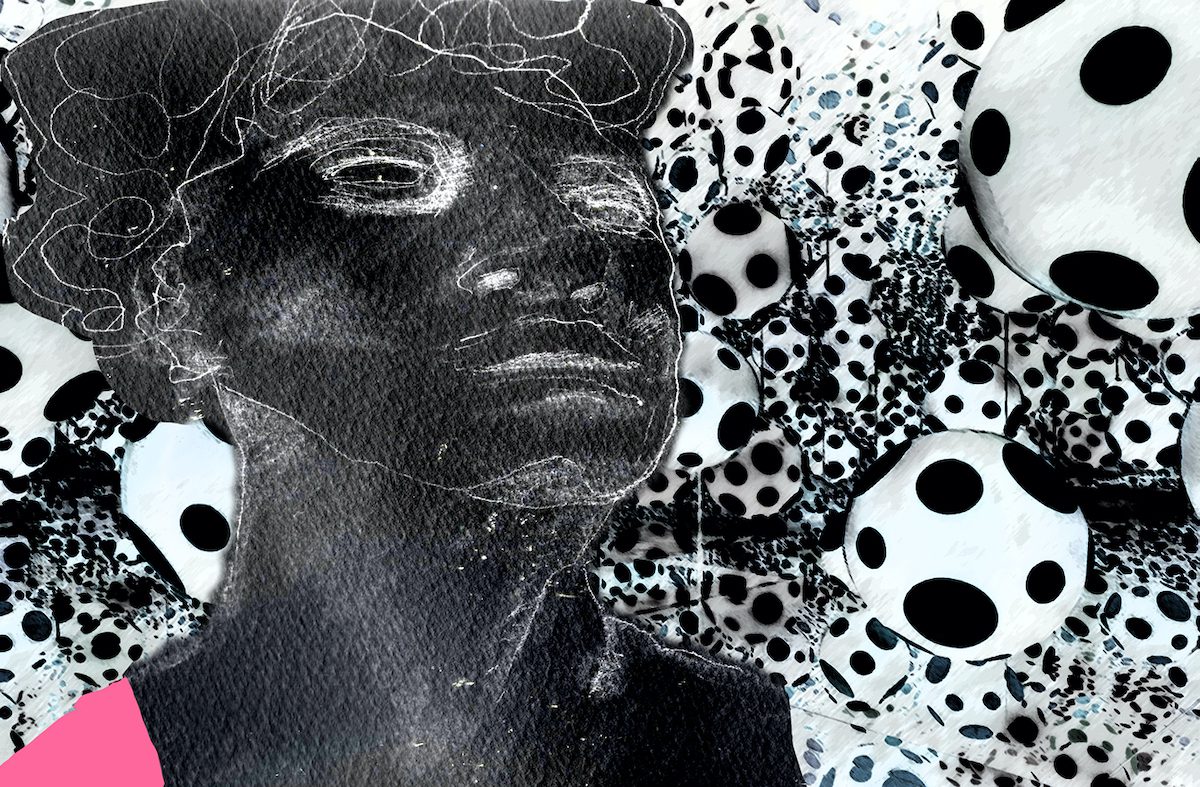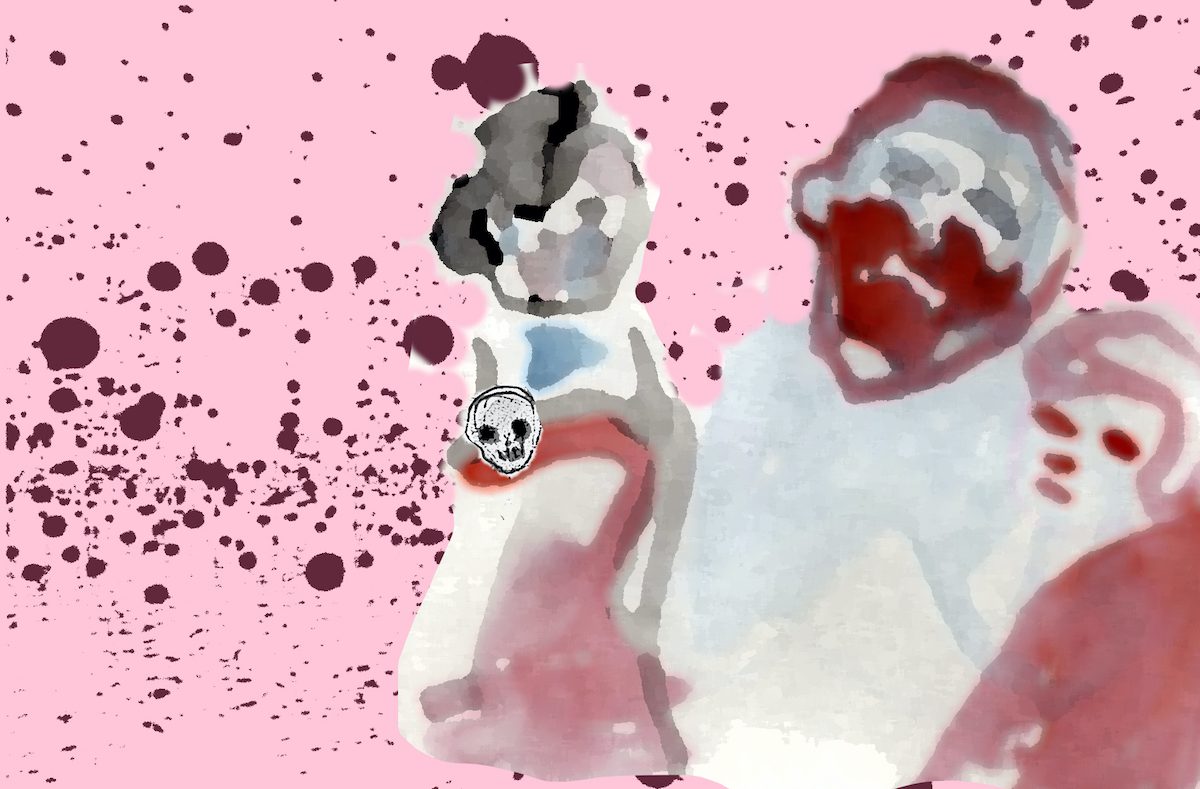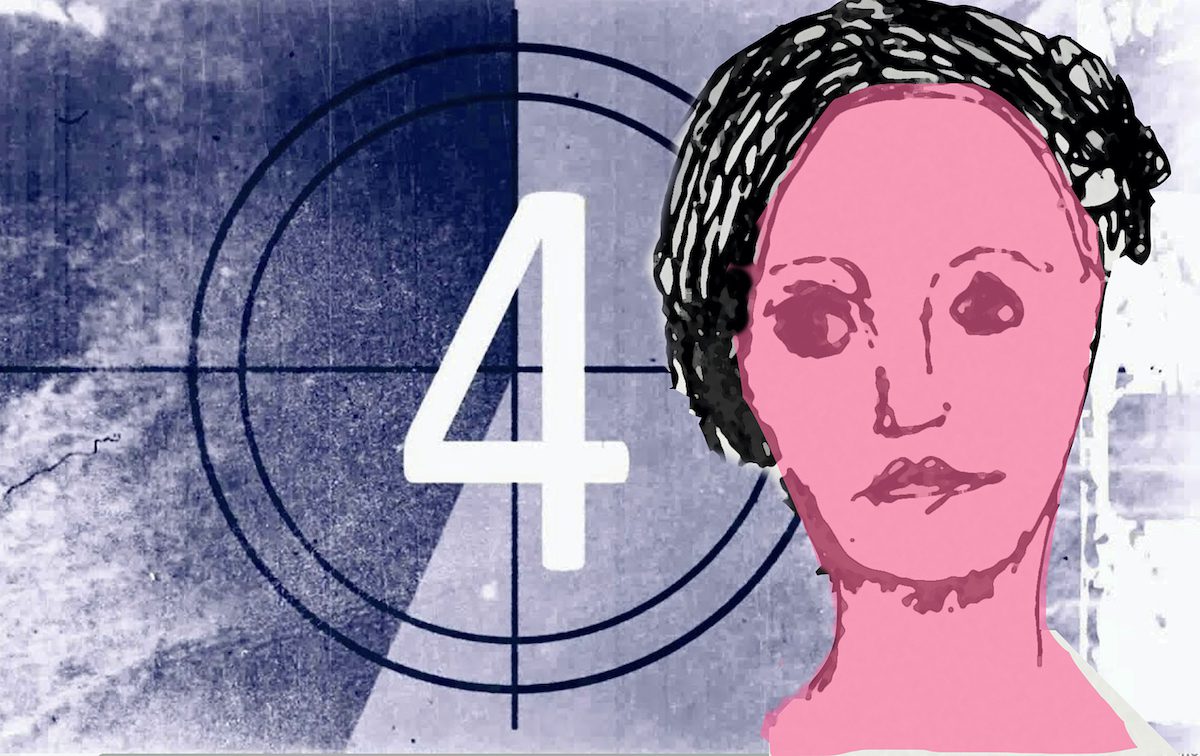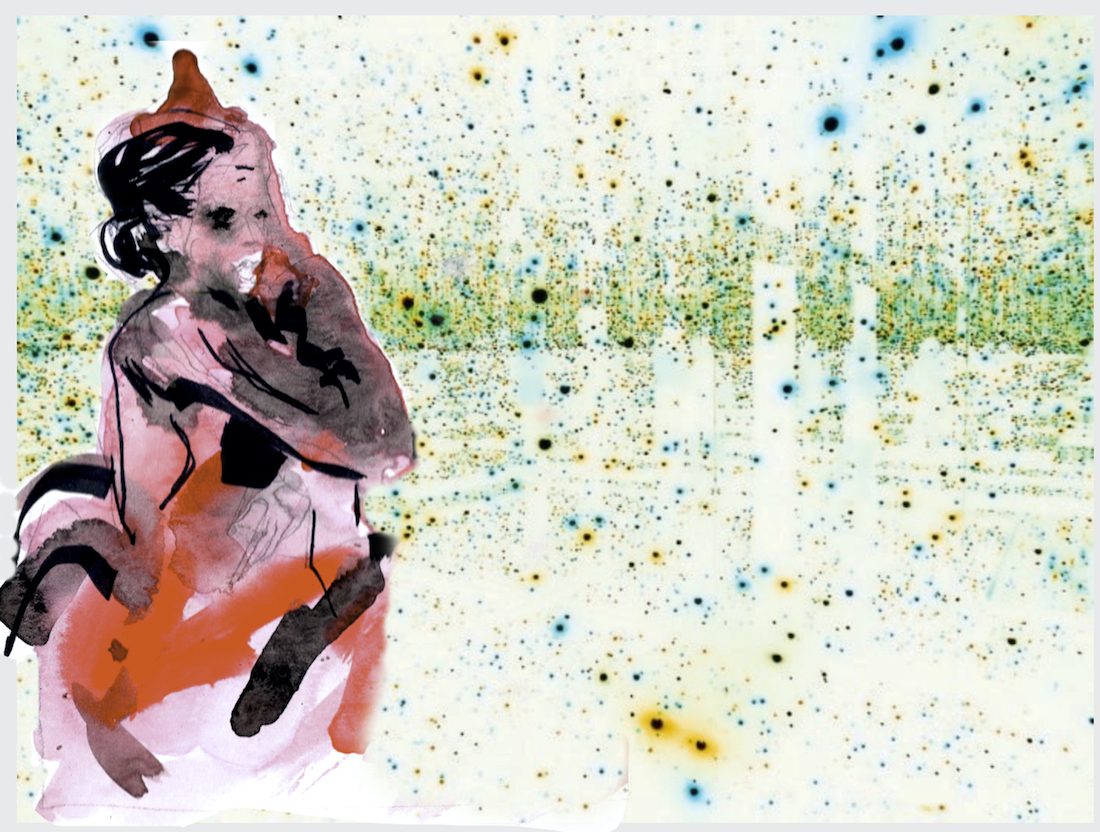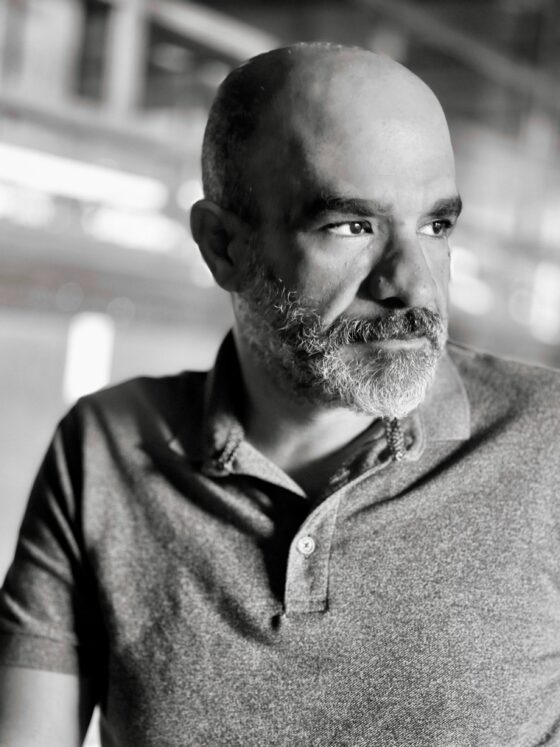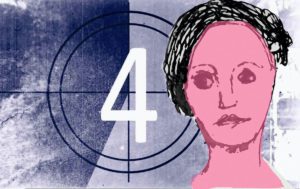
Three days before Armenian Genocide Remembrance Day in 2017, I requested the afternoon off to attend an opening night showing of The Promise with my father. Half-full, too loud, and littered with popcorn, the theater felt overly familiar—the same complex where my parents had dropped me off to meet friends or go on dates before I got my driver’s license—my childhood theater, a staple of the Ann Arbor neighborhood where I grew up. I had made the train ride home from Chicago specifically to see this film with my dad. Neither of us are big moviegoers but we needed to share this, a long withheld recognition enormous before us, our seats shaking in the blare of surround sound.
The movie looked good on paper. There were big name actors (Oscar Isaac! Christian Bale!), a respected director (Terry George), and a $100 million budget personally financed by Armenian American former-MGM Studios Inc. president, Kirk Kerkorian. Hypothetically, all the necessary elements were assembled, but no film could ever meet my expectations for this story. I’d already spent too much time in classrooms picking apart diaspora narratives. I’d often considered how our family’s history should be presented to the world.
My father is less of a critic than I am. When we left the theater, he seemed satisfied, though maybe a little indifferent, neither impressed nor underwhelmed. He, after all, had waited decades longer than I had and was, perhaps, grateful for any representation at all. I, however, found myself frustrated, raring to point out plot holes the moment the lights went up. I rambled about inconsistencies as we exited to the parking lot during one of Michigan’s consistently damp and brisk April evenings.
The Promise follows a melodramatic love triangle between an American journalist (Chris), an Armenian apothecary (Mikael), and an Armenian woman who has returned from living abroad in Paris (Ana), set amid the genocide committed against the Armenian people by the Ottoman Empire during World War I. The script mashes together complex geopolitical history and unimaginable human rights violations. The story is told through the jumbled lens of three self-absorbed characters whose obsessive romantic longing at a tragic moment in history threatens to make them caricatures. Without much build up, extreme moments of violence are thrown in pell-mell to make a point. The personal tragedies Mikael and the others face never quite connect to the film’s larger intended message of undoing erasure, leaving the historical backdrop disconnected from the individual struggles. There is simply too much going on, too quickly, and with too little time for the audience to digest. The Promise, in many ways, feels like an amalgamation of several films.
The Promise’s lack of cohesion perhaps shouldn’t be surprising. Marketed as an epic, and even drawing comparisons to Dr. Zhivago, the film climaxes on the well-documented—though under-researched—resistance of thousands of Armenians for nearly two months on Musa Dagh (Mount Moses), before the French Navy saved them from the brink of starvation. In many ways, the mountain has become symbolic of Armenian endurance and the will of a diasporic population to make sure its history is remembered. The mountain represents something immovable and undeniable, a beacon where the persecuted fought back in the face of state-sanctioned brutality.
I first read Franz Werfel’s 1933 tome, The Forty Days of Musa Dagh, much later than planned. In fact, I didn’t pick up the book until long after I’d seen George’s film. Two copies sat on my parents’ bookshelf for the entirety of my upbringing, gathering dust. The novel was mentioned in passing throughout my childhood and adolescence, but it wasn’t until I was nearly thirty years old that I requested a copy from Florida State University’s library, intending to use it as research for a course during my PhD. My original intention was to learn how the novel’s publication and reception were complicated by Nazi suppression, but I soon became obsessed with the novel’s legacy. The library sent me a tattered and stained first edition, missing the dust jacket. The cover was pale gray and faded. After years of letting it rest, Musa Dagh—especially this seasoned, soiled copy—held a mythic quality for me, its weight as much symbolic as literal. I read and read and read.
In its title, The Promise is beholden to the Hollywood legend of what could have been the 1930s film adaptation of Werfel’s novel. The Forty Days of Musa Dagh was an instant bestseller. It spends more than eight hundred pages documenting a historically accurate account through fictitious characters of those brave few villages who fought certain death against the larger, better-armed Turkish military on the mountain. If imperfect, the recent film was at least a longstanding promise fulfilled. There was more than a seventy-year interim between when MGM originally attempted to adapt Musa Dagh and the release of the 2017 film, a production that went unrealized in my grandfather’s lifetime. The complicated legacy of this scrapped movie, Werfel’s banned and little-remembered book, and the ongoing Armenian struggle for historical representation reveals so much about how works of art must be surrendered and how quickly they can be stripped away. How the art is yours, right up until the moment it is not. As a viewer in the audience on opening night, I took some infinitesimal ownership of the legacy of The Promise. I became complicit in its reception. I saw its aspirations and shortcomings, its moments of excellence and its utter failings.
By the time I was halfway through Musa Dagh, I had mixed feelings. Werfel’s narrative threads are elegant, but the characters are one-note. They fall into clear camps of good and evil. The language is flowery and overindulgent. As I plowed through hundreds of pages, I found myself wondering—as I did when I saw The Promise—if my expectations were too high. I tried to imagine learning the history of the Armenian Genocide for the first time through this novel.
What I didn’t realize as I read was how important The Forty Days of Musa Dagh would become to my creative work in the following months. As I drafted a novel, Musa Dagh found a place in the home of my contemporary Armenian American characters. The book sat on their living room shelf, a literary inheritance necessary to their growth and perspective. Werfel’s work concludes as soon as the Armenians of the mountain are saved, but it doesn’t imagine where their future generations relocated. I saw that my fiction offered an opportunity to revisit their disparate and displaced relatives more than a century later. As an epigraph, I even wound up using a quote from a moment in the novel where the hero’s son is about to be murdered by Turkish soldiers: “In a flash Stephan grasped the fact that no deed is done once and for all, that we always have to begin again at the beginning.” I knew that my characters were bound to their distant history. I understood that their story was a return to a past that was never fully resolved.
First published in German, Franz Werfel’s The Forty Days of Musa Dagh did not take long to make a splash. Its publication coincided with a time when nationalism was on the rise across the globe, and biographers believe Werfel intended for the novel to draw parallels between the Armenian Genocide and growing anti-Semitism in Nazi Germany. The English translation by Geoffrey Dunlop arrived in the United States via Viking Press in 1934 and famously sold more than thirty-four thousand copies in its first two weeks, remaining a bestseller and Book of the Month Club favorite for the next year. Americans were well aware of the desert death marches Armenians endured two decades earlier, having read much about it in major newspapers and donated millions of dollars to the Armenian situation, but by the arrival of Werfel’s translation, nearly two decades after the novel’s historical events, the Armenian Genocide had mostly fallen out of public consciousness due to oil frenzy and Turkish revisionist propaganda. For a younger generation of Americans, The Forty Days of Musa Dagh was likely the first exposure to these historical events.
Werfel’s earlier books had been subject to burnings in Germany, though the exact titles and numbers of copies are difficult to pin down. Musa Dagh arrived at a moment when it was nearly impossible not to make connections between authorial intent and mounting social and geopolitical strife, especially given that Werfel was Jewish. There was little doubt among readers that the book spoke for the present as much as it did the past, which in many ways is to the detriment of Werfel’s meticulous research. In the restored text for a new edition published by David R. Godine in 2012, translator James Reidel mentions in his introduction that Werfel dug up French military communications and records from an Armenian monastery, and “gathered an incredible amount of detail about the regional climate, geography, economy, botany, even the stations of the moon in the sky at given times and other celestial events.”
In interviews and writings, Werfel had varying answers about his motivation for writing Musa Dagh, but it cannot be overlooked that his fact-finding missions did as much service to historical accuracy as they did portentous forewarning. Approaching the text literally offered readers a researched view of one of the largest genocides in modern history. In other words, the author made the effort to make sure the novel could represent a specific moment in its own right, but the political complexities of the day took hold of the larger meaning. The zeitgeist altered public perceptions of the novel’s context. In the late 1970s, Godine, during his time at Book of the Month Club, told Publishers Weekly the novel was still selling well. By this time, separating the novel from the traumatic history of the Holocaust proved difficult. It would be easy to dive into the numerous theoretical considerations of such a blurring, the old debate about the death of the author and who imposes meaning, but all the muck of theory and criticism wouldn’t do much to account for the textual clarity of Musa Dagh’s content. The evidence is on the page. Sometimes a story doesn’t need to be a metaphor or allusion. Sometimes a story is doing exactly what it tells you it is doing.
The original inspiration, in this case, isn’t up for much debate. While traveling in Syria, Werfel and his wife, Alma Mahler, experienced a brief though memorable interaction with displaced Armenian orphans. Again, from Reidel’s introduction:
In Damascus, Werfel toured a carpet factory with Alma. He saw a number of children working the looms, many of them maimed and crippled. When he asked the factory owner about them, he was told they were Armenian orphans. Their parents had been lost in the massacres, forced deportation marches, and concentration camps of World War I.
The central message of the book became more complicated as Werfel’s draft expanded and neared completion, aligning with Werfel’s own face-to-face reckoning with Hitler. According to Werfel’s biographer, Lionel Steiman, Mahler further muddled her husband’s motivations. She regularly suggested that writing Musa Dagh was a conscious moral decision Franz made to warn of what was coming under Nazi rule. Werfel himself made this connection later, but there is no way of knowing if the conception of the novel hinged on building this seemingly prophetic bridge between two genocidal empires.
While the longevity of Musa Dagh has been imperative to remembering this chapter in history, an unfair onus lies in expecting a work of art to speak simultaneously to both the Armenian Genocide and the Holocaust. The Armenians, after all, as Hitler once boasted, were already all but forgotten, whereas today, the monstrosity of Nazis is the subject of global education and countless books and films. With publication, Werfel was acting as a careful documenter of atrocities that had already occurred, but he became the necessary foreseer of unfathomable tragedies ahead. For Werfel’s singular monumental narrative was expected to tell two stories. Over a million Armenians had died and millions more would come to a similar fate at the hands of the Nazis. The book could not just be about the past. Readers needed The Forty Days of Musa Dagh to herald what would come.
If I learned from Musa Dagh’s historical grounding and the expectations placed on it by audiences, I also learned much from its mistakes. The early drafts of my novel-in-progress suffered from similar flat characters and melodrama. But ultimately I realized that like Werfel I was also putting too much weight on ethnicity. I expected my characters’ Armenian background to define who they are, which took away from their more comprehensive identities. It became easier to see these mistakes since I had been critical of them elsewhere. I had dreamt that I could avoid the same problems facing The Promise and Musa Dagh up until the moment when I recognized that these issues littered my own work. There’s no easy way to invent a few characters to represent a pivotal moment in the history of an entire people without turning them into mouthpieces. It can feel impossible to write about experiences that are both near and far with any sense of authority.
My novel is still a mess, though less so by the day. Now working on its fifth draft, I am finally beginning to track my weaknesses and correct them before they compound. Regardless, I worry sometimes my manuscript will never get where it needs to. The Promise took years to reach fruition and still managed to be incohesive. I read debut novels and know the standards are incredibly high. I cannot fathom pulling off something the length of Werfel’s forgotten epic. My self-imposed expectations loom in my mind and stunt progress, because I fear that when I finally manage to release a novel out into the world, it too will not be enough. I am terrified a discerning reader like me will pick up my work only to be disappointed. Like me, they will see the aesthetic and historical shortcomings. They will take control of its reception. I will be letting go of years of work.
With an elevation of less than five thousand feet, Musa Dagh is a relatively small mountain. By regional comparison, Mount Ararat, the Biblical mountain famous for cradling Noah’s Ark, stands at nearly seventeen thousand feet. Still, it is a wonder that anyone, even in an act of desperation, would attempt to recreate The Forty Days of Musa Dagh on camera in a California coastal town that nearly sits at sea level. Once the translated novel proved a hit in the United States, in 1934 MGM first licensed the film and quickly began production. Clark Gable was to play the lead. Today, a sort of haunted aura hovers around the film that never managed to materialize. The story is something of Hollywood legend. Pressure from Turkey quashed the film time and time again until it was all but discarded. Suppressing production was part of a widespread and ongoing campaign by the Turkish government to revise and erase its well-documented attempt to annihilate the entire Armenian population.
In recent years, big-name rumors rekindled. Sylvester Stallone and Mel Gibson each briefly considered the project. A whisper of Stephen Spielberg directing ignited and extinguished with the abrupt lifespan of a birthday candle. Yet, it was the 1982 shoestring-budget, Sarky Mouradian-directed film financed by John Kurkjian that managed to first bring an ultimately unsuccessful adaptation of Musa Dagh to fruition. In Film Quarterly, David Welky explains how Mouradian cut numerous scenes to meet the six-week production deadline that was given in order to wrap filming before the rights reverted back to MGM. The film was all but dead on arrival. Of Mouradian’s attempt, Welky notes:
He shot Musa Dagh in the foothills of Malibu for about $1 million—roughly the amount MGM budgeted for it back in 1934. The resulting movie was a slapped-together farce that lacked cohesiveness. It never had a theatrical release and was savaged by the few critics who bothered to see it.
With this flimsy and haphazard production, the history of Musa Dagh was not only deprived of the Hollywood treatment it deserved, but also the larger consequence was that it would be another thirty-five years before the subject matter reached theaters at all. In the New York Times, Jeannette Catsoulis blasted The Promise for its “excruciatingly corny plot” and characters who were “muffled and indistinct,” but even so it was something: enough that a Turkish-funded propaganda film, The Ottoman Lieutenant, starring Josh Hartnett and Ben Kingsley, was released a month earlier as a thinly veiled filmic counternarrative. Essentially lifting The Promise’s narrative structure, The Ottoman Lieutenant presents an altered view of the same history in which Armenian casualties were a random consequence of the war, rather than a planned campaign approved at every level of Ottoman leadership. The New York Times writes:
The people familiar with the project said that tensions emerged on the “Ottoman” set after producers pushed to minimize depictions of Turkish violence against Armenians. Several people who worked on the project felt that the final version butchered the film artistically, and smacked of denialism: Dialogue that explicitly referred to systematic mass killing had been stripped out.
The Promise, if nothing else, elicited a response, because these buried events were finally being given a public moment. The movie was relevant enough to demand attention.
Though melodrama posed a challenge for the filmmakers of The Promise in trying to jam an epic love story onto a backdrop of death marches, disembowelment, and state-sanctioned ethnic cleansing, this imbalance is somewhat present in The Forty Days of Musa Dagh as well. Werfel’s dialogue is rife with moments of hyperbole, the type of plot-based, political forecasting in characters’ speech patterns that feels forced and on the nose. Critics of the day lauded much of Werfel’s masterful storytelling, but were quick to point out the burdensome length and flat characters. Writing for the New York Times Book Review, Louis Kronenberger called Werfel’s novel “a book to be read once” and insisted “it falls short of greatness.”
If the suggestion is that Musa Dagh lacks the staying power of great literature, concerns about how the history of the Armenian Genocide is remembered immediately surface as well, because in some senses the work of fiction has been popularized beyond the remembrance of the lived experience. In the December 2018 volume of The Journal of Modern History, Andrekos Varnava and Trevor Harris argue, “In practice, The Forty Days of Musa Dagh is better known than the actual events of the Musa Dagh resistance.”
How does a fictional account come to stand in for history? What weight does Werfel’s novel hold in its burden to both educate and entertain? Today, is The Forty Days of Musa Dagh the closest thing to a primary source that most readers will have to learn about a resistance that remains an indelible moment for a diasporic nation? I ask similar questions every time I sit down to write fiction grounded in my own Armenian heritage. To be that potential point of contact is both an honor and terrifying.
Other issues in Musa Dagh deserve additional consideration. While the story is meticulously researched, it is filled with broad racial tropes and incessant reminders that Armenians are the other. The novel’s protagonist, Gabriel Bagradian, happens to return to Armenia after spending twenty-three years in Paris. Much of the novel relies on stereotypes of Bagradian’s conflicting European and “Oriental” identities coming to a head. He is a Eurocentric hero, even if his primal ethnic identity occasionally roils up in him from some unknown place, one that is conveniently inserted to provide an outsider’s point of view. To a certain extent, his education and status rely on assimilating to white European culture, while his ethnic background is what prompts him to rebel and fight. Bagradian is an intellectual because he went abroad, whereas his hot-blooded instincts are a result of his ethnicity. Additionally, while Werfel was clearly struck by the displaced orphans he encountered in his travels, he doesn’t consider how they ultimately ended up in Damascus. Varnava and Harris go so far as to suggest this has resulted in a lack of scholarship on the displacement of the region’s Armenians:
The fact that he so thoroughly researched the question but stopped short at the moment of evacuation, when the Armenians are returned to the wider geopolitical context, helps us understand why few others, thus far, have tried to assess that moment and its aftermath.
By this argument, The Forty Days of Musa Dagh thus potentially altered the course of contemporary study. If Werfel knew he was writing a definitive text, would he have approached it differently? Werfel died in 1945, giving him little time—and nearly no time outside of the context of World War II—to see how Musa Dagh fared after its initial publication.
While Musa Dagh has not necessarily aged well, it is still lauded in many Armenian communities today. Of Werfel, Lionel Steiman recounts that after the book was published he, “was mobbed and feted by Armenians in Paris and New York, where an Armenian priest proclaimed in a sermon that, while his people had always been a nation, it was Franz Werfel who first gave them a soul.” Art is intrinsically related to the soul of a population. Writing is integral to public memory. Literature is our collective space to reconsider and debate the moral and ethical shortcomings of existence. Werfel knew this when he wrote. The Nazis knew this when they burned his books. When the Ottoman Empire first deported and murdered a select group of prominent Armenian intellectuals on what became known as Red Sunday, they knew this too. They understood documentation could alter history. And we still know this today. The Committee to Protect Journalists found that two hundred and fifty-one journalists were imprisoned in 2018, sixty-eight in Turkey alone. The nation-state still thrives on control, on limiting those interpretations, on withholding information. Controlling books, controlling films, controlling newspapers, controlling resistance, controlling borders, controlling healthcare, controlling how history is recorded. There are countless ways all of us are entangled in public systems of control. It is ironic then how much of artistic creation ultimately requires relinquishing control to everyone else—to supporters, to naysayers, to critics, to friends and family, and to the at-large collective of unknown consumers.
I don’t know that any book or movie will ever give me the sense of historical understanding that I hope for concerning the Armenian Genocide—and I certainly know that regardless of how much research I include, my own fiction will never meet my personal standards in this regard—but I can recognize the vulnerability, the total sense of surrender, the expectation of never attaining true accuracy that Werfel must have felt in writing a historical novel which exposes the near decimation of an entire people. To publish Musa Dagh in a moment of global turmoil demonstrates certain audacity. My personal criticisms are out of context and decades late.
There’s no good way to do such monumental tragedies justice. There can be no assurances in an artist’s legacy. To produce such a blatantly political novel in the face of immense fear is a remarkable gift. The consequences are impossible to predict. Failure is a constant reality. It is difficult for any artist to honestly speak to the quality of their own work, no matter how well crafted, revised, and researched. How can anyone place a value judgment on something so personal? I hope someday I will join Franz Werfel and Terry George and all the others who have gifted the world with a book, a film, some significant cultural artifact to be consumed. When the time comes, I know all I can do is offer up what has been built, the meticulous structure compiled word by word. It must be surrendered, cast out of my individual control, lost to whoever is willing to take a chance on it. Then it is up to you.
***
Rumpus original art by Carl Dimitri.
***
Works Cited:
Catsoulis, Jeannette. “Review: The Promise Finds a Love Triangle in Constantinople.” New York Times. April 20, 2017. https://www.nytimes.com/2017/04/20/movies/the-promise-review-oscar-isaac.html
Kronenberger, Louis. “Franz Werfel’s Heroic Novel: A Dramatic Narrative That Has Stirring Emotional Force.” New York Times Book Review. December 2, 1934.
Reidel, James. “The Epic of a Genocide.” New York Review of Books. April 24, 2015. https://www.nybooks.com/daily/2015/04/24/epic-armenian-genocide/
Rosen, Judith. “Godine to Publish Restored Werfel Classic.” Publishers Weekly. March 26, 2012, Vol. 259 Issue 13, pgs. 12-15.
Schleifer, Yigal. “Armenia’s Doomed Quest to Recruit Steven Spielberg.” The Atlantic. February 15, 2012. https://www.theatlantic.com/international/archive/2012/02/armenias-doomed-quest-to-recruit-steven-spielberg/253131/
Steiman, Lionel. Franz Werfel, the Faith of an Exile: From Prague to Beverly Hills. Wilfrid Laurier University Press, 1985.
Varnava, Andrekos; Harris, Trevor. “‘It is quite impossible to receive them’: Saving the Musa Dagh Refugees and the Imperialism of European Humanitarianism.” The Journal of Modern History. Vol. 9, No. 4. December 2018.

